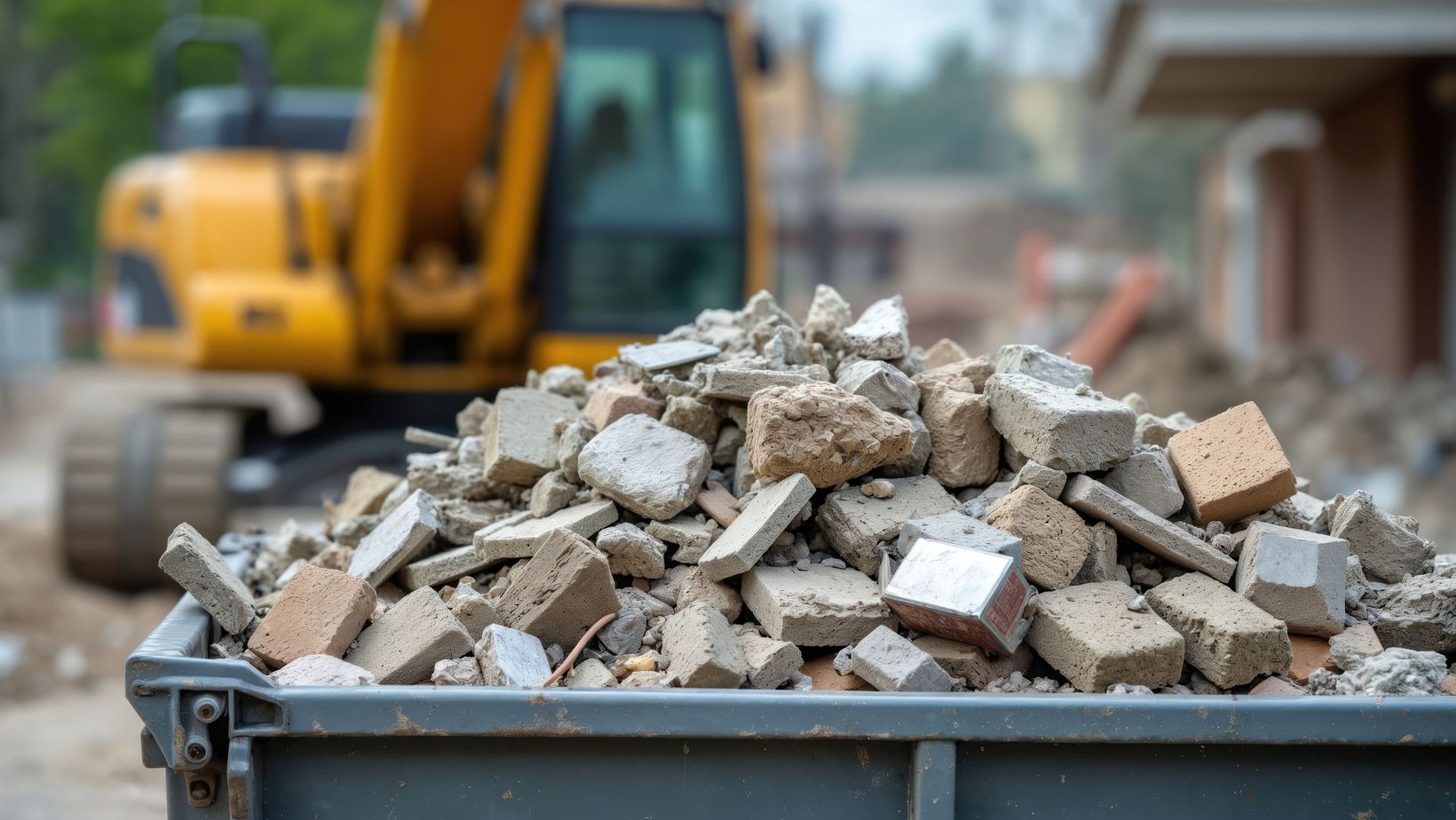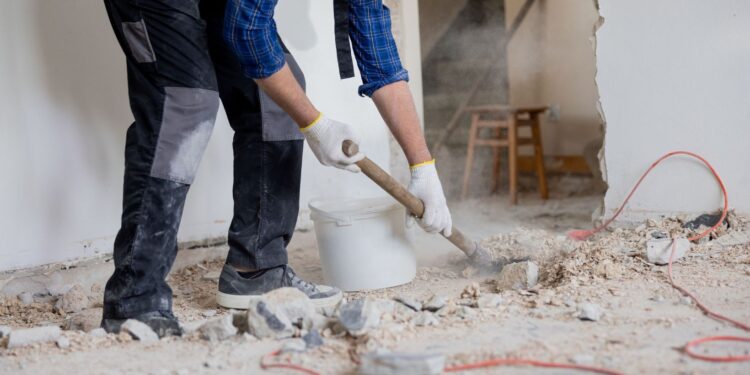After completing a renovation or demolition job, you’ve probably stood there staring at a massive pile of concrete waste, wondering, “Now what?” Those jagged concrete pieces aren’t just in the way. They’re heavy materials, expensive to toss, and a serious pain to move.
The truth is that concrete in construction is unavoidable. But with tons of concrete being torn up every day across driveways, parking lots, and job sites, finding smarter ways to deal with the mess has become a top priority. Fortunately, you don’t have to stick to old-school methods like hauling loads to a landfill for concrete and paying sky-high landfill costs. There are smarter, greener, and more cost-effective solutions now.
Let’s break down the innovative tools and methods that are changing how you manage concrete debris removal—making cleanup easier, safer, and more sustainable.
High-Performance Tools and Services for Concrete Disposal
Gone are the days of just renting a truck and shoveling concrete rubble into the bed. Now, a wave of purpose-built tools and services can speed up the concrete removal process and help you avoid the mess and stress.
Concrete Washout Bags
These aren’t your average job site trash bags. Concrete washout bags are heavy-duty, watertight containers designed to hold liquid leftover concrete and slurry before it hardens. Instead of pouring waste onto the ground (which risks improper disposal), you can capture and contain it safely. Once full, they’re picked up and sent directly to a facility for recycling.
Dumpsters for Concrete
Dumpsters can hold concrete waste from driveway removal, slab demolition, or from tearing up concrete with mesh. Unlike general dumpsters, these are made specifically for heavy construction materials. They’re strong enough to handle the weight and volume without damage.
Some dumpster rental companies even offer lower rates for clean concrete loads since those can go straight to a demolition recycling center without extra sorting. Knowing your concrete dumpster rental costs up front can help you budget smarter for larger projects.
Specialized Junk Removal Services
Not into lifting hundreds of pounds of concrete cast-offs? You’re not alone. Many people rely on junk hauling services for having heavy machinery and trained staff who handle items with concrete, construction debris, and other heavy materials.
These pros know where to take your construction material waste—whether to a transfer station or recycling facility—saving you time and avoiding damage to your vehicle. It doesn’t matter if you’re clearing out after a major remodel or handling office space improvements; hiring the right team can make the concrete debris removal process clean, safe, and efficient.
On-Site Crushers for Concrete
For construction crews or developers, portable crushers are making waves. These machines grind concrete from projects right on-site, reducing it to concrete aggregate in minutes. It’s a game-changer for large-scale jobs with high amounts of concrete left. Instead of hauling concrete waste off-site, you can recycle it on the spot and reuse it as base material or cost-effective material for roads or foundations.
These modern tools and services are changing how people deal with concrete elements and cleanup. With the right approach, you can save money, reduce stress, and keep your project running smoothly from start to finish.
Sustainable Disposal and Repurposing Solutions
Disposing of concrete isn’t just about getting rid of it. It’s about what happens next. These innovative repurposing tools and practices make sure your waste doesn’t go to waste.
Recycling Facilities Turning Waste Into a Resource
With better access to recycling facilities, concrete from construction companies no longer needs to be dumped. These facilities sort, clean, and crush pieces of concrete into recycled concrete, which builders can reuse as new construction materials for infrastructure projects. Keeping materials in the recycling process protects natural resources and keeps waste out of landfills. Consider these facilities when you’re working with square feet of driveway or tearing down concrete elements in a building.
Low-Carbon Concrete Innovations
Some companies specialize in collecting concrete for repurposing to create low-carbon concrete. This innovative blend includes recycled materials and uses fewer emissions in production. If your contractor uses a mix made partly from recycled concrete, you’re supporting a shift away from resource-heavy production and reducing the environmental footprint of your project.
Repurposing for Landscaping Applications
Don’t overlook the creative side of recycling. Landscaping companies often transform concrete pieces into pavers, garden edging, or even small retaining walls. Instead of tossing those jagged chunks from your layers of concrete, think about reusing them in landscaping applications. It’s a low-cost concrete disposal option that doubles as a design feature.
Concrete Drop-Off at Local Recycling Centers
Many cities support public demolition recycling centers where homeowners can drop off pickup truck loads of clean concrete. These are great for DIYers who don’t need a dumpster but want to avoid the landfill for concrete. Just be sure to separate any metal or mesh to speed up intake at the facility for recycling.
Sustainable disposal isn’t just the responsible choice; it’s also the practical one. With smart tools and eco-friendly practices, you can turn construction waste into valuable recycled materials that benefit future projects.
Final Thoughts
Managing concrete debris doesn’t have to mean backbreaking work, overflowing landfills, or blowing your budget. These innovative tools can transform how you handle concrete on sites, whether you’re remodeling your backyard or overseeing a full-scale construction project.
Moreover, when you recycle or repurpose, you’re not just solving a problem, you’re creating value. The next time you’re staring at a pile of concrete aggregate and wondering what to do, remember: with smart planning and the right tools, you’re just a step away from cleaner sites, lower costs, and a more sustainable project.













